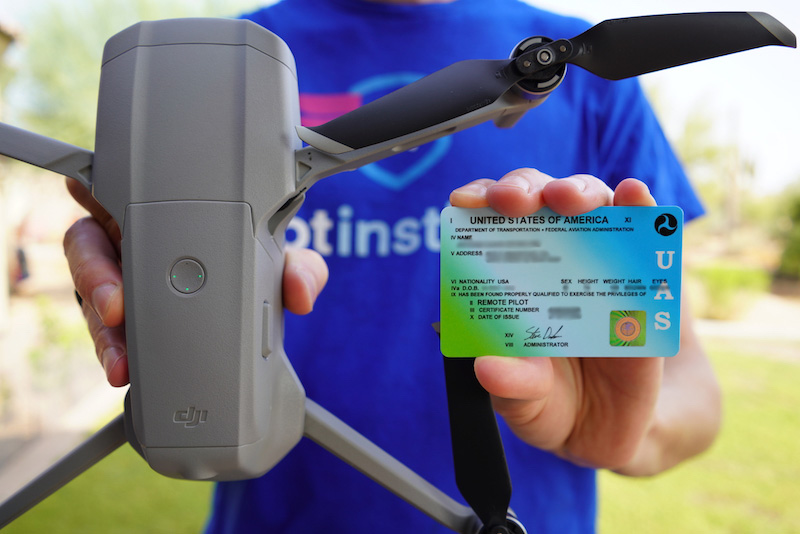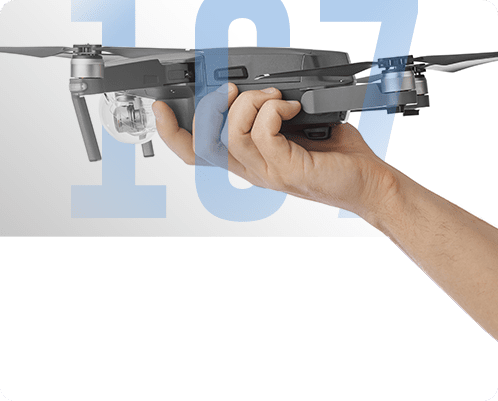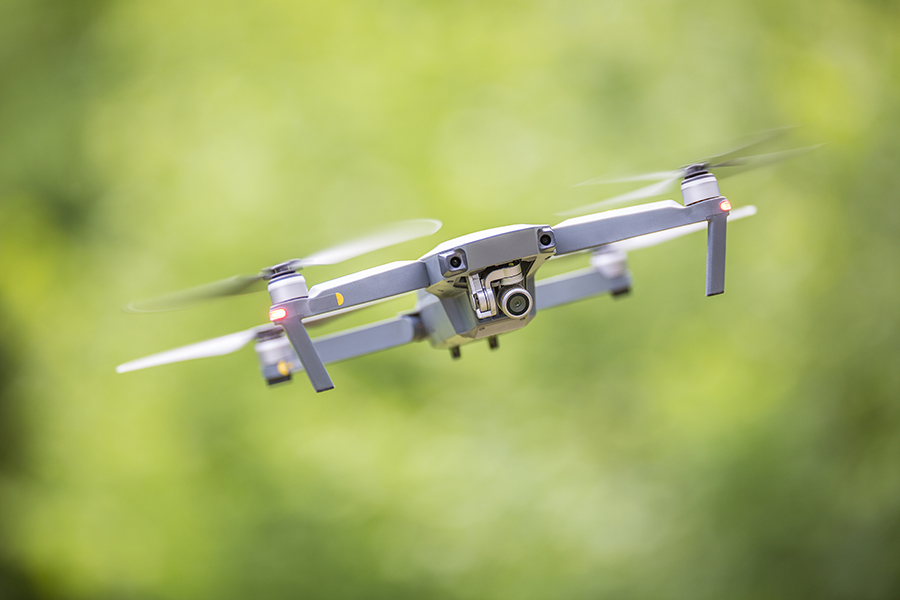-
1. To simplify the rules you need to follow
-
2. To fly your drone for compensation
-
3. To fly over people and vehicles
-
4. To fly above LAANC grid numbers with authorization
-
5. To fly higher than 400 feet when above buildings in uncontrolled airspace.
-
6. To fly from a moving vehicle
-
7. To request waivers from the FAA
-
8. To become a safer and more confident drone pilot
-
9. To tell everyone you’re a pilot
-
How do you get a Part 107 license?
If you have been flying your drone for a while, chances are you’ve heard of Part 107.
Most people believe that you only need a Part 107 license if you are flying your drone for compensation. Although compensation is a factor that decides whether you need a Part 107 license to fly your drone legally, it’s far from the only criteria.
Below we list reasons to get a Part 107 license that you may not have known before reading this article.
1. To simplify the rules you need to follow
Part 107 is named after the regulations that govern drone operations in the United States (14 CFR Part 107).
By default, all drone operators in the United States fly under Part 107 laws unless they qualify for the exemption for recreational flyers (which is called 44809).
To fly your drone under recreational rules you need to meet all 9 of these conditions:
- You fly your drone for strictly recreational purposes.
- You fly your drone using the rules of a Community Based Organization (CBO).
- You fly your drone within visual line of sight.
- Your flying doesn’t interfere with and gives way to manned aircraft.
- You get airspace authorization before flying in controlled airspace.
- You fly your drone no more than 400 feet above ground level.
- You have taken the The Recreational UAS Safety Test (TRUST).
- You have registered your drone if it weighs more than 250 grams.
- You don’t fly your drone dangerously or recklessly.
If you don’t meet all of the conditions above, then you are automatically flying your drone under Part 107 laws.
The Federal Aviation Administration (FAA) has the authority to issue you a fine if you are flying under Part 107 rules without being licensed.
Although enforcement actions from the FAA are rare, having a Part 107 could be important from a legal and liability perspective if anything goes wrong during a flight.
This video has more information on the rules above:
Having a Part 107 license gives you the flexibility to choose which rules you want to fly your drone under.
2. To fly your drone for compensation
As you saw above, you need a Part 107 license if you want to fly your drone for any reason other than purely recreational fun.
A Part 107 license allows you to earn money from flying your drone. People are using drones in dozens of industries including for:
- Real estate listings
- Stock photography
- Cell phone tower inspections
- Aerial mapping
- Agricultural inspections and spraying
- Search and rescue
- Drone package deliveries
- Livestreaming events
- Movie productions
- Construction progress reporting
- Insurance estimates
The drone industry is growing fast and there are numerous opportunities that are available. Having a Part 107 can help you build new skills and it’s required for some jobs.
3. To fly over people and vehicles
You may have heard that drone pilots can now legally fly over people and vehicles under certain circumstances.
The FAA listened to feedback from the industry and decided to loosen the rules for Part 107 pilots. If you are licensed, you can fly your drone over people and vehicles under certain conditions.
These privileges are not available to recreational pilots.
4. To fly above LAANC grid numbers with authorization
If you have used a LAANC app like Aloft to request permission to fly near airports, you are familiar with the grid numbers that they show. These grid numbers show the maximum altitude you can fly your drone at in the area where you are flying.
People with a Part 107 can request an exception from the FAA in the Drone Zone and fly above these grid numbers legally.
You can also request to fly in a zero grid if you are Part 107 certified. This means that even if LAANC shows that you can’t fly in a place, you can make a request to the FAA for an exemption.
5. To fly higher than 400 feet when above buildings in uncontrolled airspace.
One of the rules that most drone pilots are familiar with is that you can’t fly your drone higher than 400 feet.
It turns out that if you are flying under Part 107 rules, you can legally fly above 400 feet when you are within 400 feet of a structure that’s in uncontrolled airspace. You can fly up to 400 feet above the structure in this situation.
6. To fly from a moving vehicle
You can fly your drone legally from a moving vehicle under Part 107 rules if you are in a “sparsely populated area”. The FAA has not defined what sparsely populated means, but you still need to maintain visual line of sight with the drone and follow all other rules.
7. To request waivers from the FAA
The FAA allows Part 107 pilots to submit waivers that allow you to bypass certain rules. These include:
- 107.25 – Operation from a Moving Vehicle or Aircraft (fly from a vehicle in populated areas)
- 107.29 – Operation at night (fly without an anti-collision light)
- 107.31 – Visual Line of Sight Aircraft Operation (fly BVLOS)
- 107.33 – Visual Observer (To override VO requirements)
- 107.35 – Operation of Multiple Small UAS (For a drone light show for instance)
- 107.39 and § 107.145 – Operation over people and vehicles (When operation not covered by Cat 1, 2, 3, or 4)
- 107.51 – Operating limitations for Small Unmanned Aircraft (fly higher than 400 feet, faster than 100 MPH, fly near clouds, etc)
Only Part 107 pilots can request a waiver to rules. Although waivers can be hard to receive, they do provide more flexibility to drone pilots when you can get one granted.
It is likely that the FAA will also allow for more routine beyond visual line of sight (BVLOS) flights to Part 107 pilots in the future.
8. To become a safer and more confident drone pilot
Becoming a Part 107 licensed drone pilot will make you more confident and knowledgeable.
After getting your Part 107 license you will have peace of mind on how you can fly your drone legally and safely.
9. To tell everyone you’re a pilot
Perhaps the most important reason to get a Part 107 license is to tell all of your friends that you are now a pilot.
The FAA calls the Part 107 license a “Remote Pilot Certificate”. You can whip out your FAA license and show it off to all your friends.
How do you get a Part 107 license?
You can get a Part 107 license by passing a 60 question multiple-choice exam. The exam covers numerous topics including regulations, airspace, weather, airport operations, NOTAMs, and more.
Although you can study on your own, Pilot Institute’s Part 107 Made Easy program has been used by more than 38,000 pilots. Our students score 93% on the exam on average, which is 10% above the national average.
Furthermore, our program is taught by an FAA Certified Flight Instructor who flies both drones and airplanes. Most other programs are taught by marketers without an aviation background.
Regardless of how you prepare for the exam, having a Part 107 license can help you fly more safely and become a more confident operator. There are numerous advantages and benefits of a Part 107 license.




